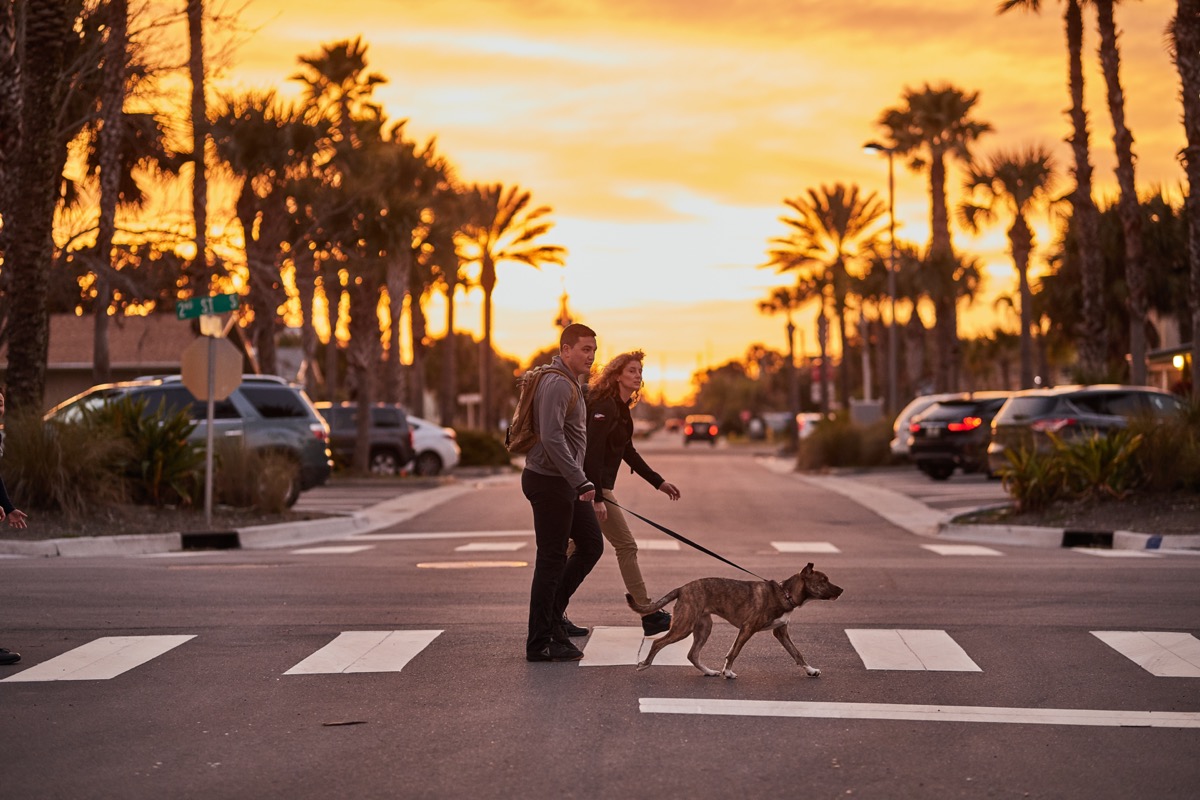
It’s springtime, the trees are budding, the birds are chirping, and you’re itching to put some miles on those new I/O Cross Trainers. Your trusty canine companion has been locked up all winter, tired of running into the backyard to relieve himself and then dodging freezing rain and icy patches while he darts back into indoor safety. You’re both ready for some buddy rucking! However, your dog has NOT been going to the gym over the winter months (maybe you haven’t either) and therefore needs a gradual re-introduction to physical activity and the elements before you bring him along on a 12-miler. Here are some tips to help minimize the chances of injuring your dog while you get him back into shape for the summer.
1. Be aware of risk factors
Just like humans, animals can have health factors that impact their mobility and overall fitness. Be cognizant of individual factors like very young or very old age, breed (especially brachycephalics, like bulldogs, pugs, boxers, etc. or Arctic breeds, like huskies and Samoyeds, and large breeds in general), overweight/obese body condition, metabolic diseases (especially diabetes mellitus and adrenal disease), degenerative joint disease/arthritis, coat/fur characteristics (dark-colored dogs and dogs with double coats or long fur overheat easily), or a history of other health issues (heart murmurs, seizures, asthma/bronchitis, airway obstruction, auto-immune disease, anemia, and tickborne disease, to name a few). In addition, the lukewarm/humid days of late spring are prime time for heat stroke, because dogs’ bodies haven’t yet had a chance to adapt to the changing weather. Use caution when exercising dogs during those first few warm days of the season – bring extra water, avoid direct sunlight, and don’t stray too far from the comfort of an air-conditioned support vehicle. If you are three miles out on a mountain trail in 75F heat and you notice your dog overheating, it’s going to be very difficult to get him back to safety – and you may end up with an emergently ill coupon. It’s also important to note that dogs that survive one severe case of heat stroke are prone to relapses at a later time, so tread very carefully in warm weather if your dog has already had a close call.

2. Prevent the preventable
Your dog should be on heartworm and flea/tick preventatives for at least a month prior to being exposed to insects and other arthropods outdoors, and the gold standard is to use these products year-round. Heartworm is a potentially deadly bloodborne parasite, transmitted by mosquitoes and basically ubiquitous in the American South. Ticks can transmit Lyme disease, anaplasmosis, and other infections, and fleas can set up shop in your home and transmit tapeworms and other problems. You will need to visit a veterinarian for a blood sample for a heartworm test before your dog can be prescribed heartworm preventatives. Some flea and tick preventatives are available over the counter, but the most effective ones are prescription only and also available from your veterinarian. While you’re at the vet’s office getting that blood drawn, you can also ask any questions you might have about your dog’s upcoming outdoor activities, as well as have his annual exam and vaccines to make sure everything is in working order. Your dog should also have a current rabies vaccine, at the very minimum, although there are also effective vaccines to prevent canine distemper, leptospirosis, and Lyme disease.
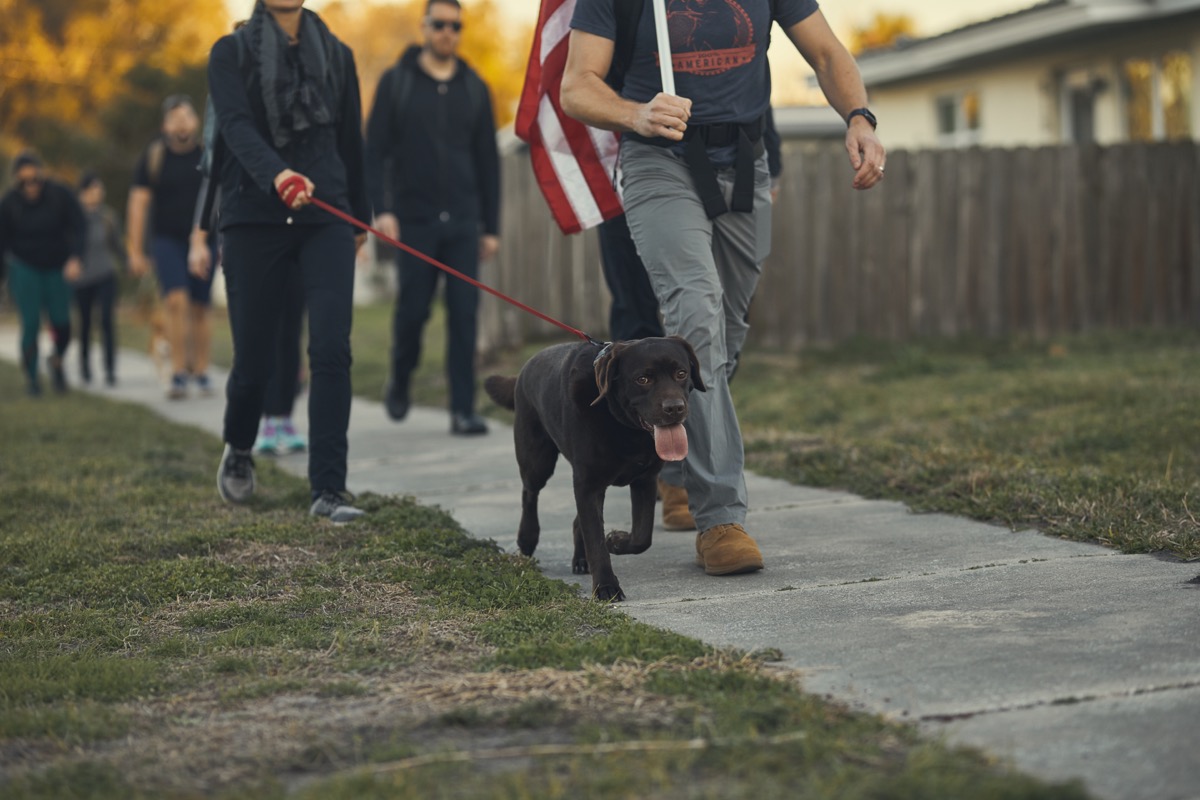
3. Don’t overdo it
Start out with a 10- to 15-minute walk a few times a week and see how your dog does. Try to time these walks in the early morning or the late afternoon and avoid high noon, especially during the hottest days of summer. Once you have established that your dog does well on short walks, you can add distance, a half mile to a mile at a time, depending on the dog. Remember that a mile seems a lot longer to a small dog than it does to a large dog when scaled to body size. If you aim to cover significant distances with your dog and need to train yourself as well, consider going out twice a day – one long distance by yourself, and a shorter distance with your dog. Generally, if you are rucking at a 15-20 min/mile pace, it will be easier to condition your dog for this speed than it will to condition your dog to jog or run with you for several miles. Humans are much more adapted to long distance movements than dogs are; dogs are generally built for sprints. Giving your dog time to adjust to a new training schedule will minimize the risk of musculoskeletal and metabolic problems.
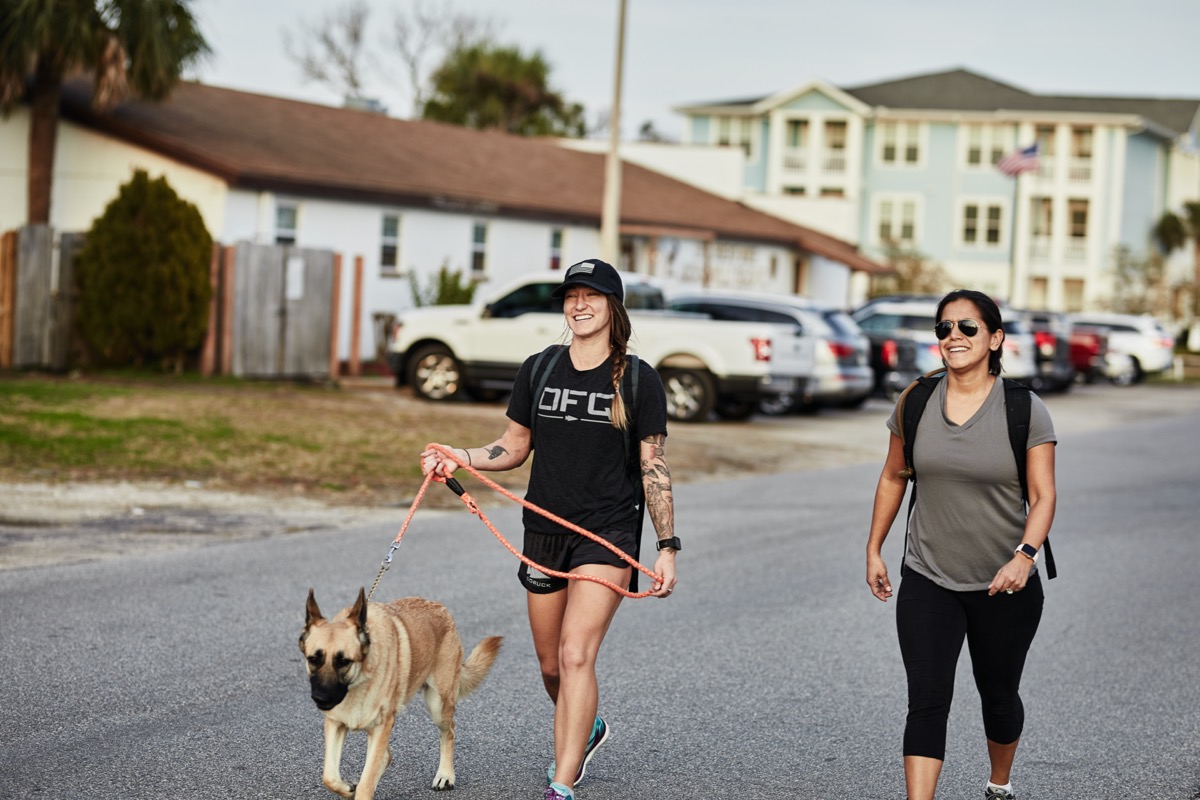
4. Bring water
Throw a doggie water bottle or an extra hydration bladder in your ruck. A safe rule of thumb is to bring an ounce of water per pound of body weight (a dog’s resting daily water requirement), maybe more if you’ve got something extra long planned. For a sixty-pound dog, I would recommend bringing a half gallon (64 ounces) for a 2- to 4-mile ruck, depending on the weather. Don’t forget a bowl – some dogs will drink from a bottle, but many will not. You can put an ice pack in there, too, to assist in cooling. Carry this in your own bag; don’t make your dog carry it. Your dog probably won’t need snacks on a ruck, although it’s OK to bring something for him to reward him for putting up with a bunch of bipedal weirdos for a few hours.

5. Watch for danger signs
Be on the lookout for signs of heat exhaustion/heat stroke, soft tissue or orthopedic injury, wounds and lacerations, anaphylactic reactions, and dehydration – while this is not a comprehensive list, it definitely covers some of the most common “trailments.” Any of the following signs is a potential cause for concern and probably warrants at least a break, and at most a trip back home (and hopefully not to the emergency vet): excessive panting/drooling, tacky mucous membranes, limping, bleeding, facial swelling, vomiting, diarrhea, bloody or dark stools, lethargy, reluctance to walk, straining to urinate, or other behaviors that are not typical of your dog. If you see something like uncontrolled bleeding, an open wound, seizures, changes in mucous membrane color, collapse, or loss of consciousness, it almost goes without saying to seek emergent medical care. This brings us to our next point…

6. Know your emergency contacts
In most coastal areas of the United States, veterinary emergency hospitals are generally available 24/7. Be aware, this quality of care comes at a cost, so you may want to consider pet insurance or a dedicated savings account starting now. If you are in a more rural area, it’s a good idea to call a few veterinary clinics in the area ahead of time and be familiar with any who offer emergency hours or on-call services, and if those services are available to non-regular clients (they may not be). Keep a few numbers saved in your phone and written on a physical piece of paper – remember, two is one, and one is none. You can also include the ASPCA Animal Poison Control Hotline in case your dog ingests a weird plant or substance on the trail.
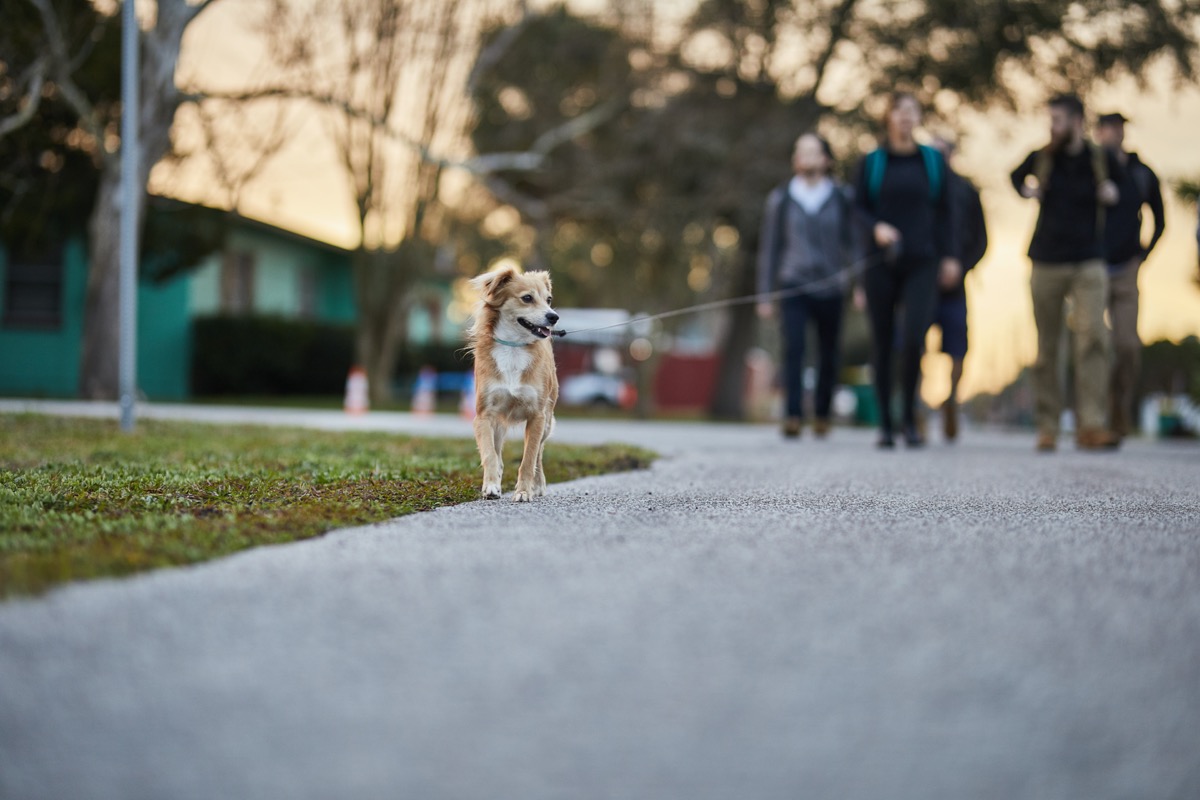
7. Use leashes, collars, and pet identification
Obey leash laws when applicable. Use a six-foot non-retractable leash and an appropriately sized collar or harness to keep your dog from escaping. Even if your dog is leashed and safely restrained, be aware that other people’s dogs (and wildlife) don’t always approach on a leash. Do not muzzle your dog when it is warm outside, as this can inhibit panting, which is necessary for dogs to remain cool. If you really want some unique technology, you can purchase a GPS tracker to attach to your dog’s collar/harness. Alternatively, you should at least have a collar with an ID tag (including your contact information) and a rabies tag, and you can consider an implantable RFID microchip that can be scanned by anyone who finds a stray dog. If your dog becomes involved in an altercation with another dog or another animal, use extreme caution when trying to separate the two, as aggravated animals may also attack humans who attempt to interfere. If your dog is bitten by another animal, seek veterinary care emergently and try to obtain contact and rabies vaccine information from the other pet’s owner. If there is an incident with wildlife, note the species and call one of those emergency veterinarians from your list (see above) to see if it might be a good idea to collect/report the animal for rabies testing. Your veterinarian will have further instructions as to what to do following a possible rabies exposure depending on your pet’s vaccine status and the species of the biting/bitten animal.
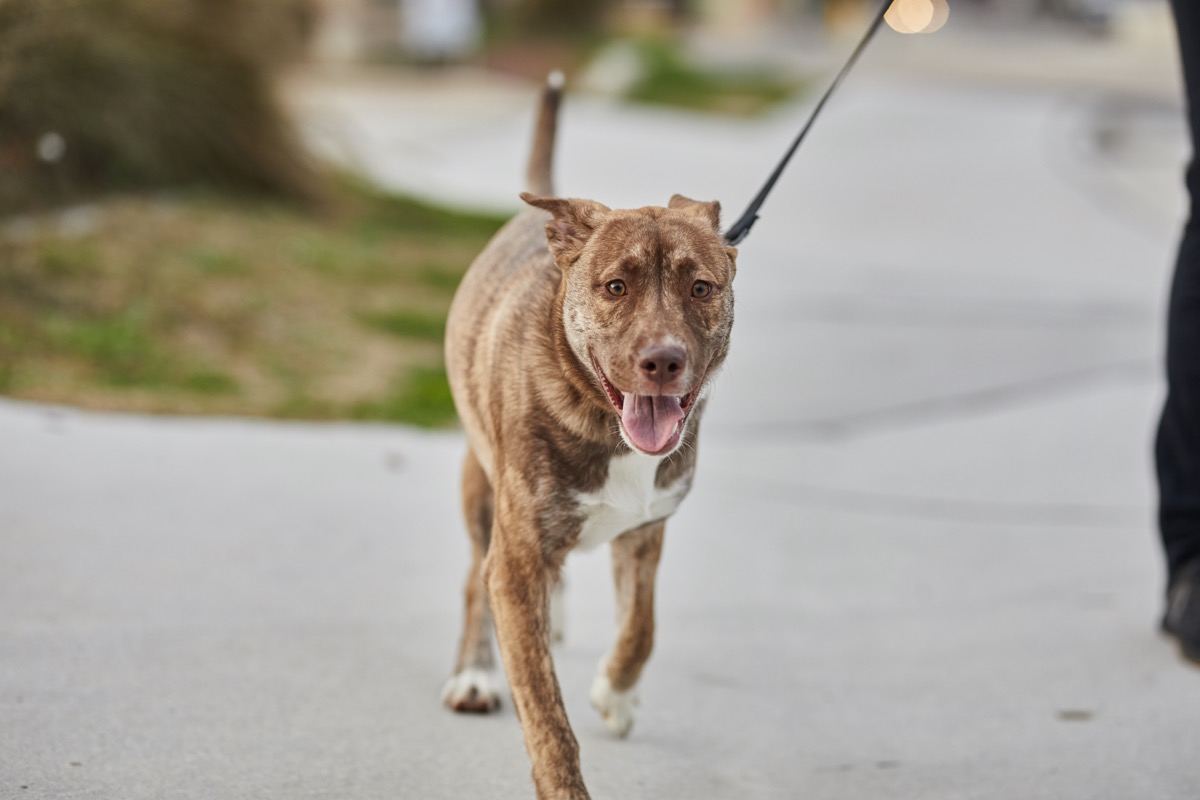
8. Consider first aid supplies
First and foremost, DO NOT GIVE YOUR DOG HUMAN PAIN MEDICATIONS unless you have been explicitly instructed by a veterinarian to do so. Anti-inflammatory drugs (aspirin, ibuprofen, acetaminophen, etc.) can cause liver, kidney, and gastrointestinal problems that are compounded by dehydration and heat stress. If you have a safe veterinary pain medication that has been prescribed by a veterinarian, then you can bring it with you and use it according to their directions, if needed. You can purchase minor pet first aid kits that include items like bandage material, topical ointment, hydrogen peroxide, disposable gloves, styptic powder, eye wash, and other basic supplies. You may want to call your veterinarian prior to your expedition and ask if it is safe to bring Benadryl (diphenhydramine) for your dog in case he is stung by a bee or other arthropod. If your dog requires medications, ask your vet if he is healthy enough for sustained activity, and if you need to have these medications available during a ruck.
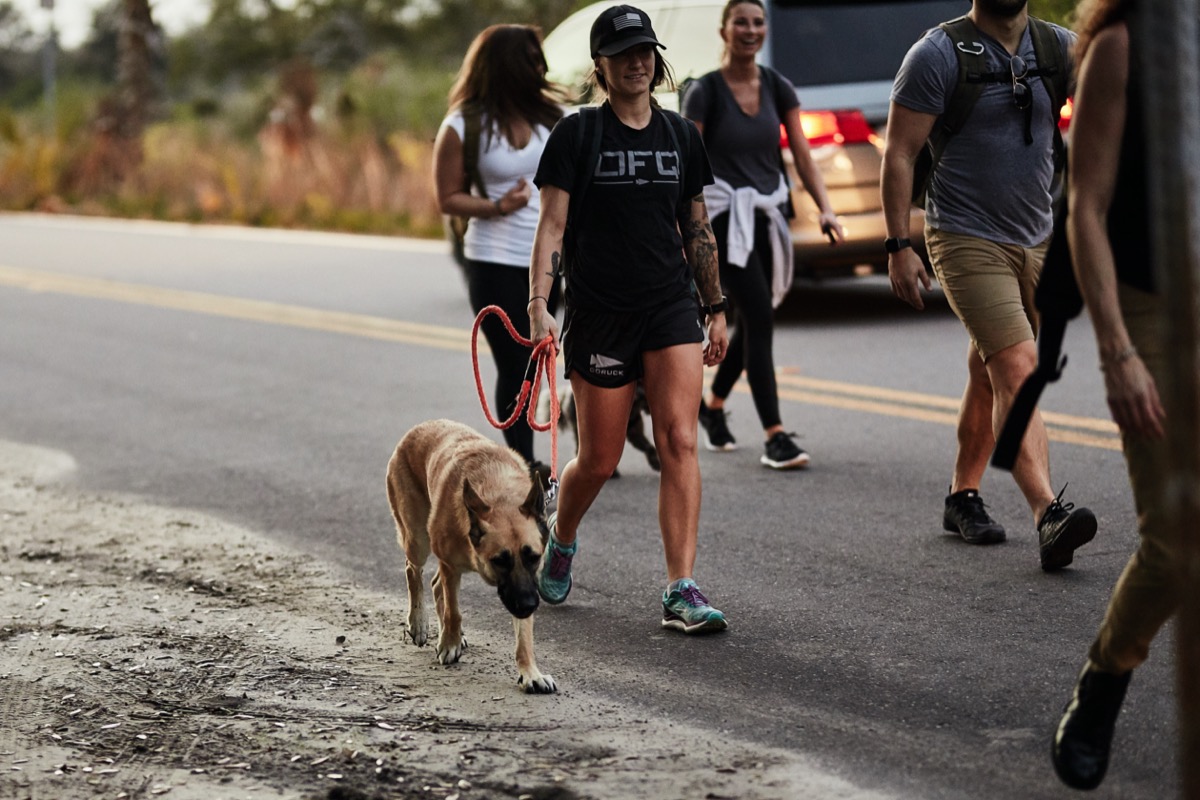
9. Don’t leave your dog in your car
If you decide that you want to ruck without your dog halfway through your day, please don’t leave your dog in your vehicle. On a mild 70F day, the interior temperature of a car can reach over 100F in half an hour. At worst, your dog could succumb quickly to heat stroke, and at best, you could return to a dogless vehicle with a smashed window (and potentially a note from a concerned citizen or law enforcement officer). If you need to call it quits, take your dog home and back to climate control before you go back out for more good living.
This is by no means a comprehensive list – it’s best to ask your veterinarian any specific questions you may have about your dog’s health and suitability for physical activity. If you are out and about and a problem arises, it is prudent to seek veterinary advice or care as soon as possible, depending on the severity of the situation. I hope that this list at least gives you some tips to keep in mind as we enter the warmer months. Be safe, and happy rucking!
About the Author: Erin E. Turowski, DVM, is a Medical Director, MSPCA-Angell at Essex and proud member of Beantown Ruck Club.
Disclaimer: This article is intended to provide general advice and does not serve as a substitute for specific medical advice from a licensed professional. If you have concerns regarding your pet’s fitness for strenuous activity, please ask your veterinarian prior to engaging in such activities.
Featured Gear:
- Bullet Ruck Colors

